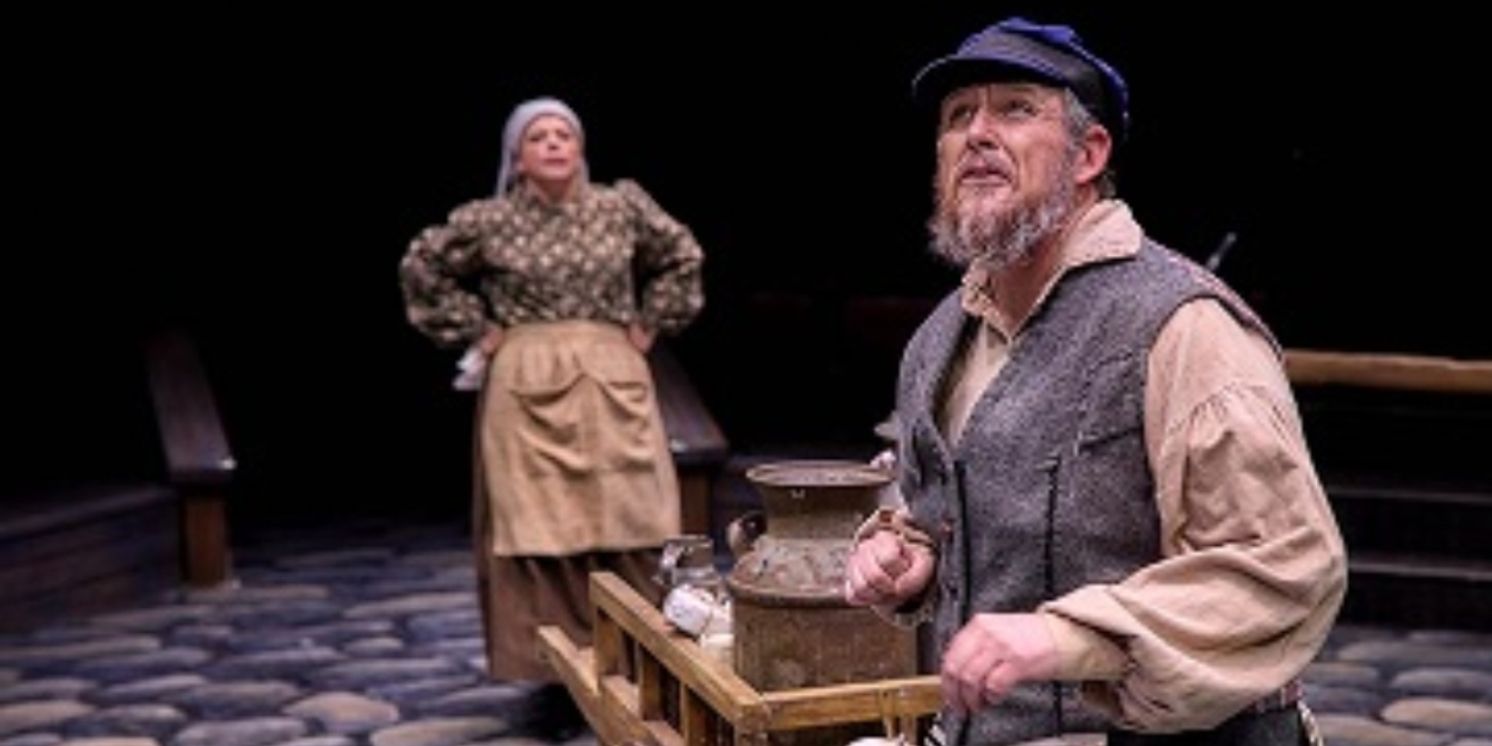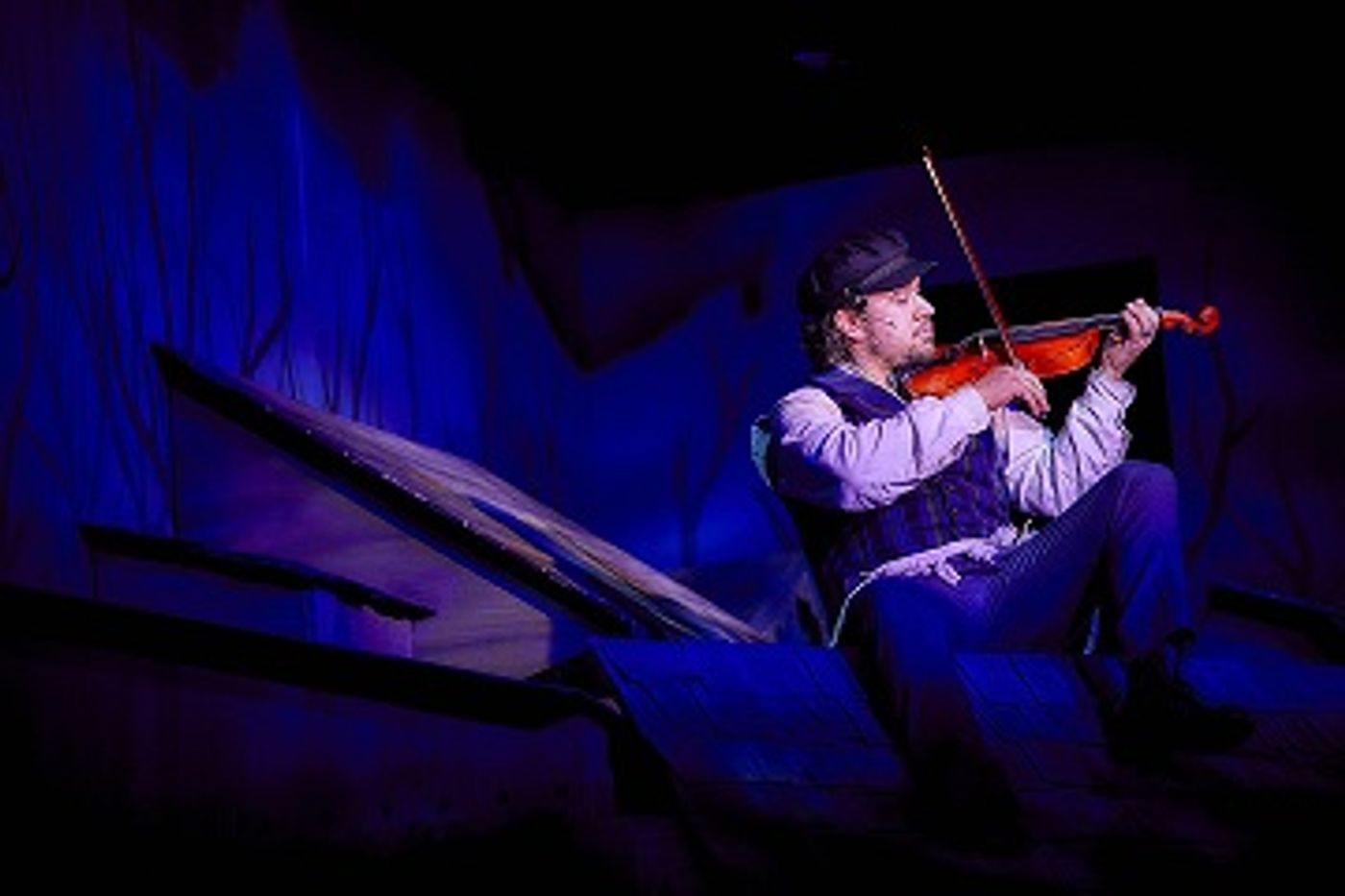Review: FIDDLER ON THE ROOF at Hale Centre Theatre
The production, directed by Cambrian James, runs through November 25th.

Guest Contributor David Appleford returns to the pages of BroadwayWorld with this illuminating and informative review of Hale Centre Theatre’s production of FIDDLER ON THE ROOF.
Because of its enduring worldwide popularity, it is believed that at any given minute of any twenty-four-hour day, there are at least ten productions of FIDDLER ON THE ROOF in performance somewhere around the globe. Here in the valley, there are at least two during the current 2023-24 season.
One of those productions is now playing at Hale Centre Theatre in Gilbert until November 25, directed and choreographed by Hale's very own in-house Jerome Robbins, Cambrian James (also credited as being in charge of wigs and makeup). What always makes a large-scale musical production at Hale Centre Theatre automatically interesting is how the show is adapted and presented.
Hale Centre is a theatre-in-the-round. With no sets or backdrops used in the traditional sense, in-the-round productions rely on the talent of the performers, the props the talent has in hand, and the smooth mobility of the various tables, chairs, and beds required within any given scene. With years of practice, effective scene changes on the Hale stage are executed with a slick, almost military-style precision, and it's always impressive, as it is here with the show's several scene changes.
Not all musicals adapt well to an in-the-round presentation. Even Hale has produced the occasional misstep by relying too much on the use of a balcony in the northeast corner, forcing patrons seated in that section to either crank their necks uncomfortably or simply sit there and stare at nothing in particular while they listen to dialog for long stretches. Not so with FIDDLER ON THE ROOF. The action is squarely centered so that at all times, all four sides of the audience can view the production without adjusting head angles. Visually, this current production of Fiddler may well be the company’s best presented in-the-round musical since its production of The Drowsy Chaperone in 2016.
FIDDLER ON THE ROOF is a unique show for several reasons. It’s one where within the first few minutes an audience can tell whether musically the production is going to work or not, and there are two clues.
The first clue is the entrance of the show's leading player, Tevye, the poor village milkman. By his appearance, his voice, his body movements, and his engagement with the audience after just a few lines of dialog, audiences can immediately determine if the casting is off. Adam Guinn's Tevye, with his world-weariness, his humor delivered with a reluctant shrug, and his ability to take sudden command with his declaration of 'Tradition!’ works so well, you get the casting assurance you were hoping for.
There are two schools of thought when it comes to the portrayal of Tevye. Should it be the realistic, earthy, Eastern European style of character, made famous around the world by Topol, who was also in the film? Or should it be the more comedic, broader, American style of Yiddish shtick from comic actor Zero Mostel, who might have entertained New York in the original ‘64 production, but was in danger of taking audiences out of the moment with his nightly ad-libs? During one performance he even referenced Jimmy Carter. Guinn’s local portrayal balances the two. There is a lot of good, crowd-pleasing humor built into writer Joseph Stein’s script, particularly in the first half, but at its heart, Fiddler on the Roof is a rueful drama. To work as well as it should, Tevye's portrayal needs to be less shtick and more grounded. As directed by Cambrian James, Guinn's Tevye straddles the fine line between the two styles, leaning more towards realism than an act direct from the Poconos, making his moments of genuine anger and ultimately sorrow, particularly in the final moments, all the more effective.
The second clue comes moments later when the full cast enters and assembles in a circle around Tevye. With their arms in the air and those full-bodied, robust-sounding voices filling the theatre while introducing audiences to the circle of their ramshackle village, you get that same sense of assurance you just felt with the introduction of Tevye: musically, the show is going to sound exactly as the piece demands. This production's real strength comes from the voices. Even though the music used is pre-recorded, musical director JR McAlexander has drawn some outstanding voices from the cast. The large-scale production numbers, such as Tradition, To Life, Sabbath Prayer, Sunrise Sunset, and the hugely effective The Dream, are all as you would want them to sound, vigorous, full-bodied, and robust. But there’s also strength in the more focused, smaller songs, such as Tevye’s three older daughters (Brie Wadsworth-Gates, Gracie Gamble, and Carmiña Monserrat) singing Matchmaker, Motel’s (Brandt Norris) Miracle of Miracles, and Perchick’s (Noah Delgado) Now I Have Everything.
Alice Johnson’s Golde may be sharp-tongued, as the part requires, but she is also less shrewish and more sympathetic than some previous valley productions have presented. Her song Do You Love Me? sung with Tevye remains as touching as ever. Taylor Hudson’s Lazar Wolf the Butcher is equally grounded with a sense of realism. It’s worth noting that with his presence and his earthy voice, Hudson would also make a solid Tevye in any future production of FIDDLER.
The trick to directing actors in-the-round is to make sure that audiences on all four sides of the house can see the action. This means actors have to be on the move so at no time should it appear that something important is being said while an actor’s back is the only thing a certain block of theatre patrons can see. During the dream sequence, for instance, the bed from which Tevye and Golde observe the ghostly apparitions around them is constantly moved around the stage so that audiences are never left with a view from behind. Most of the time it works well. But those important moments when Tevye talks directly to God are somehow less effective for the same reason.
As written, when the milkman seeks advice from the Almighty, the action freezes, a spotlight falls on Tevye, and he looks up, stranded for a lengthy moment in direct conversation; there shouldn’t be movement. But that won't work in-the-round. As a result, the actor is forced to move about so that he can always be seen, occasionally even stepping out of the light, making the moment of intimacy between man and his maker less efficient. The same problem occurs with the staging of both Do You Love Me? between Tevye and Golde, and Far From The Home I Love, between Tevye and his daughter Hodel. For different reasons, both are emotional, and both should be staged from a seated position without movement. But, again, that won’t work at Hale, so the characters are forced to stand and move around, unnaturally.

FIDDLER ON THE ROOF is among the most important musicals ever to be produced when telling the story of the Broadway musical, its writers, the composers, and the lyricists. It's the first show to be based on its creator's historical origins without its subject reshaped for white, mainstream consumption. As screenwriter William Goldman wrote, “Without Jews, there simply would have been no musical comedy to speak of in America.”
Tevye's escape from persecution and his journey to a new life in a new world at the turn of the last century is the Jewish American experience. It's also the prologue to the foundation of the great American musical. In the way Tevye talks of completing the circle of his ramshackle village in Czarist Russia (which, being south of Kyiv is actually in Ukraine) the arrival in 1964 of FIDDLER on Broadway rounded off the complete story of American theatre: it came full circle.
Because of this, any production of FIDDLER ON THE ROOF needs to respect the material and its background. It is powerful musical theatre that incorporates wit, warm humor, and conflict in the first half, and heartbreaking drama in the second, especially when it becomes obvious what is soon going to happen to these poor unfortunate souls at the hands of the Czar. While it’s a shame that Hale Centre Theatre has so far never invested in a revolving stage among its recent building updates, something that would have artistically benefited the show's conclusion, the fade-out of Tevye and his family wearily pulling their loaded cart as they walk away from their village in a large circle and finally out of sight to an unknown future, remains effectively sorrowful. You should feel emotionally drained.
Hale Centre Theatre ~ 50 W. Page Avenue, Gilbert, AZ ~ https://www.haletheatrearizona.com/ ~ 480-497-1181
Photo credit to Nick Woodward-Shaw
Reader Reviews
Videos

